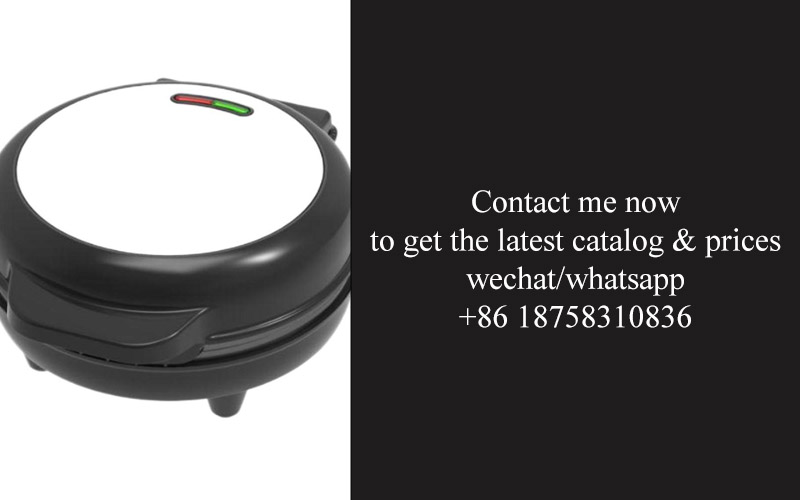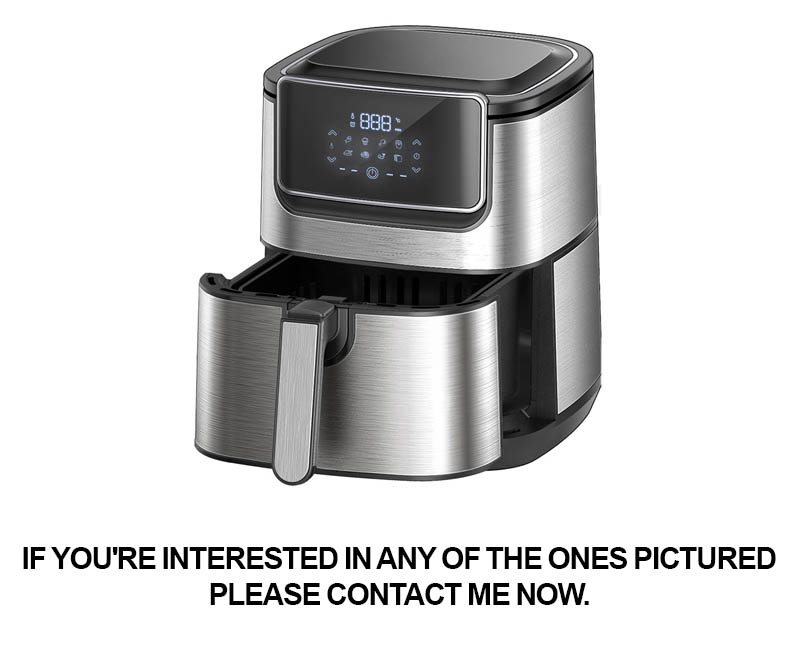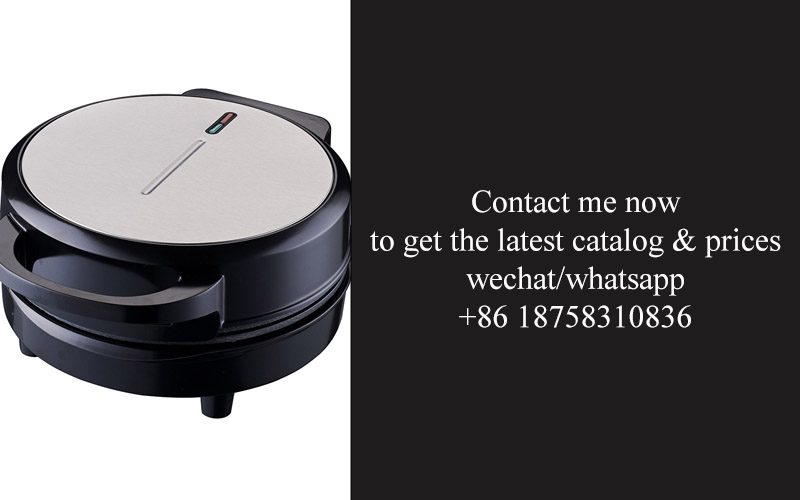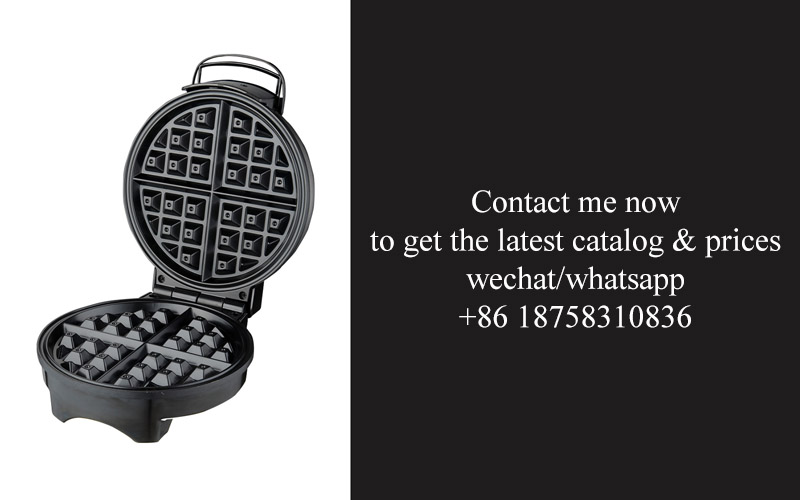Address
304 North Cardinal
St. Dorchester Center, MA 02124
Work Hours
Monday to Friday: 7AM - 7PM
Weekend: 10AM - 5PM
Address
304 North Cardinal
St. Dorchester Center, MA 02124
Work Hours
Monday to Friday: 7AM - 7PM
Weekend: 10AM - 5PM

In this ever-evolving technological landscape, the integration of smart solutions into our daily lives has become a necessity rather than a luxury. This is particularly true when it comes to the realm of kitchen appliances, where innovation and efficiency are key drivers of consumer preference. As we delve into the future of kitchen tech, we uncover a myriad of novel ideas and groundbreaking advancements that promise to revolutionize how we interact with our kitchens. Join us as we explore the potential of these innovations, the data behind them, and the challenges and opportunities that lie ahead.
The integrated circuit board, often referred to as the “brain” of modern kitchen technology, plays a pivotal role in shaping the appliances that have become an integral part of our daily lives. These tiny, yet powerful, components are the cornerstone of innovation, driving the evolution of kitchen appliances from simple tools to sophisticated, smart devices.
At the heart of these appliances lies the microprocessor, a marvel of modern engineering that processes information and controls the functions of the device. The microprocessor in an IC board is akin to the central nervous system of a human body, orchestrating a symphony of operations with precision and efficiency.
Consider the refrigerator, once a simple storage unit, now a smart appliance with an IC board that not only manages temperature but also monitors food spoilage and suggests meal options. The IC board in this case is not just a controller; it’s a gateway to a world where your fridge can communicate with your phone, alerting you to the need for groceries or reminding you of the leftovers you forgot about.
In the realm of cooking appliances, the IC board has transformed the stovetop. Induction cooktops, for instance, use an IC board to generate a magnetic field that heats pots and pans directly, eliminating the need for a traditional flame. This not only saves energy but also ensures faster and more precise cooking times. The IC board in these cooktops also allows for features like temperature control and automatic shut-off, adding an extra layer of safety.
The oven, too, has been revolutionized by the integration of IC boards. Modern ovens are equipped with sensors that adjust the heat distribution to ensure even cooking. The IC board enables programs for different types of food, from slow-roasting meats to defrosting frozen items, all with the touch of a button. It’s not just about convenience; it’s about the ability to achieve culinary perfection with minimal effort.
In the realm of ventilation and air filtration, IC boards have made significant strides. Ductless range hoods, for example, use these boards to control the speed and direction of the air flow, ensuring that smoke and odors are efficiently removed from the kitchen. The IC board can even learn your cooking habits and adjust the fan speed accordingly, creating a more comfortable cooking environment.
The integration of sensors into kitchen appliances has been another game-changer, thanks to the IC board. Smart ovens, dishwashers, and even countertop appliances like toasters and kettles now feature touch sensors and voice recognition, making them more intuitive and user-friendly. These sensors can detect when a pan is placed on an induction cooktop, automatically adjusting the heat to the optimal setting for that particular pot or pan.
Energy efficiency is another area where the IC board has made a significant impact. By optimizing the power usage of kitchen appliances, IC boards help reduce energy consumption and lower utility bills. This is particularly important in the context of global climate change, as it encourages the adoption of more sustainable practices in the home.
Moreover, the IC board has facilitated the integration of connectivity features. Smart kitchen appliances can now be connected to the internet, allowing homeowners to control them remotely via smartphones or other smart devices. This connectivity not only adds convenience but also opens up new possibilities for data collection and analysis, enabling manufacturers to provide personalized recommendations and services.
In conclusion, the integrated circuit board is not just a component; it is the heartbeat of modern kitchen technology. It has transformed the way we interact with our kitchen appliances, making them more efficient, intelligent, and user-friendly. As technology continues to advance, the IC board will undoubtedly play an even more significant role in shaping the future of our kitchen experiences.

The European kitchen appliance market is a vibrant and mature sector, characterized by a high penetration rate of modern technologies. Consumers in Europe are known for their preference for energy-efficient and eco-friendly appliances, with a strong emphasis on design and innovation. German manufacturers, in particular, are renowned for their quality and precision, leading the market with brands like Miele and Siemens. The market is also seeing a rise in smart kitchen appliances, with a growing number of consumers embracing technology to enhance their cooking experience.
In the United States, the kitchen appliance market is equally dynamic, driven by a diverse consumer base with varying preferences. American consumers tend to prioritize convenience and performance, with brands like KitchenAid and Whirlpool dominating the market. The U.S. market has been rapidly adopting smart kitchen technology, with a focus on connectivity and integration with other smart home devices. Additionally, there’s a significant segment of the market that values traditional, high-quality appliances.
The European market is segmented into several key categories, including refrigerators, dishwashers, ovens, and small appliances. Refrigerators, in particular, are a cornerstone of the market, with consumers seeking features like variable temperature zones and advanced energy-saving technologies. Dishwashers are also popular, with demand for quieter, more efficient models that can handle a variety of dish types.
In the U.S., the market is similarly segmented, with a particular focus on refrigeration and cooking appliances. American consumers are particularly interested in smart refrigerators that offer features like digital displays, built-in cameras, and remote access capabilities. Cooking appliances, such as ranges and ovens, are also in high demand, with innovations like convection ovens and induction cooktops becoming increasingly popular.
Both markets are influenced by a range of factors, including demographic shifts, economic conditions, and technological advancements. In Europe, the aging population and the rise of single-person households are shaping the market, with a growing demand for compact and multi-functional appliances. The U.S. market, on the other hand, is being influenced by the trend towards healthier living, with an increased interest in appliances that can help consumers prepare nutritious meals.
The European and American markets also differ in their approach to distribution. In Europe, there is a strong emphasis on brick-and-mortar retailers, with many consumers preferring to see and touch products before making a purchase. Online sales are growing, but traditional retail remains a significant channel. In the U.S., e-commerce has a much larger presence, with major online retailers playing a crucial role in the distribution of kitchen appliances.
Innovation is a key driver in both markets, with a constant stream of new products and features being introduced. Smart kitchen appliances are at the forefront of this trend, with a focus on connectivity, user-friendliness, and integration with other smart home systems. European manufacturers are leading in this area, with a range of products that cater to the needs of environmentally conscious consumers.
On the other side of the Atlantic, American manufacturers are focusing on innovation in cooking technology, with an emphasis on efficiency and performance. Induction cooktops, for example, are becoming more common as consumers seek appliances that can quickly and evenly heat food.
Despite these differences, both the European and American kitchen appliance markets share a common goal: to provide consumers with products that not only enhance their daily lives but also offer convenience and peace of mind. The future of these markets looks promising, with continued growth expected as technology advances and consumer expectations evolve.

In the realm of kitchen appliances, the Integrated Circuit (IC) board factory stands as a beacon of innovation, driving the development of cutting-edge technologies that are transforming the way we cook and live. Here’s a glimpse into some of the remarkable advancements emerging from these factories:
The integration of AI and IoT in kitchen appliances is revolutionizing the user experience. Smart ovens, refrigerators, and dishwashers are now equipped with AI-driven algorithms that learn from user habits, offering personalized settings and predictive maintenance.
LED lighting technology has been integrated into modern kitchen appliances, not just for illumination but also for efficiency. These LED panels provide a brighter, clearer view of the cooking area, while consuming significantly less energy than traditional bulbs.
Advanced sensor technology has made its way into kitchen appliances, enabling them to respond to their environment with precision. For instance, smart cooktops can detect the presence of a pot and automatically adjust the heat output, ensuring optimal cooking conditions.
The rise of modular kitchen appliances is a testament to the factory’s commitment to customization. Users can now choose individual components that fit their needs, from different-sized ovens to various types of dishwashers, all interconnected through a central control system.
Energy efficiency is a cornerstone of modern kitchen appliances, and IC board factories are at the forefront of this movement. The development of more energy-efficient motors and control systems has led to appliances that save energy without compromising performance.
Innovative cooling systems, powered by advanced IC boards, are now capable of maintaining precise temperatures in refrigerators and freezers. These systems use algorithms to optimize cooling cycles, reducing energy consumption and extending the life of the appliance.
The integration of haptic feedback technology into kitchen appliances is a subtle yet significant advancement. For example, a smart stove might vibrate to alert the user when the cooking temperature is reached or when the appliance is in use, enhancing safety and convenience.
The use of biometric sensors in kitchen appliances is not just a novelty but a practical solution. Fridges can now recognize and track the contents based on user biometrics, ensuring that food is stored at the ideal temperature and providing nutritional information.
The factory’s focus on sustainable materials has led to the development of eco-friendly kitchen appliances. These appliances are designed to be recycled or composted at the end of their life, reducing the environmental impact.
In the world of kitchen appliances, the integration of augmented reality (AR) is becoming increasingly popular. Users can now use their smartphones or tablets to see how a new appliance would look in their kitchen, virtually placing it in the space before making a purchase.
Safety features have been greatly enhanced with the help of IC boards. Appliances can now monitor for gas leaks, electrical hazards, and even fire risks, alerting users to potential dangers before they become a problem.
The rise of voice-activated kitchen appliances, powered by IC boards, is changing the way we interact with our appliances. Users can now control their kitchen devices with simple voice commands, making cooking and cleaning more efficient.
The factory’s dedication to connectivity means that kitchen appliances are now part of a larger ecosystem. They can communicate with each other and with the user’s smart home system, providing a seamless and integrated kitchen experience.
In summary, the innovations emerging from the Integrated Circuit Board factory are not just about making kitchen appliances smarter; they’re about making them more intuitive, efficient, and safe. These advancements are paving the way for a new era of kitchen technology that promises to enhance our daily lives in countless ways.

In the realm of kitchen appliances, innovation is the driving force behind the evolution of everyday cooking experiences. The integrated circuit board factory is at the forefront of this transformation, pushing the boundaries of what’s possible. Here are some of the novel ideas that are poised to redefine the future of kitchen appliances.
Smart Sensors for Precision CookingImagine a world where your oven adjusts its temperature and cooking time based on the food you place inside. The integrated circuit board factory is developing smart sensors that can analyze the color, texture, and even the weight of ingredients to ensure perfect cooking every time. These sensors could revolutionize baking, roasting, and even sous-vide cooking by eliminating guesswork and ensuring consistent results.
AI-Driven Personalized CookingArtificial intelligence is not just for smartphones and cars; it’s also making its way into kitchen appliances. The factory is experimenting with AI-driven systems that learn from your cooking habits and preferences. These systems could suggest recipes, adjust cooking settings, and even clean up after you, creating a truly personalized cooking experience that caters to your unique tastes and dietary needs.
Modular Kitchen AppliancesThe concept of modular kitchen appliances is gaining traction, allowing users to mix and match components to suit their cooking style. The factory is creating IC boards that power a range of modular devices, from countertop ovens to compact refrigerators. This approach not only offers versatility but also promotes sustainability by allowing consumers to upgrade parts rather than the entire appliance.
Haptic Feedback in Kitchen ToolsHave you ever wondered what it would be like to feel the texture of the food you’re cooking? Haptic feedback technology is making this a reality. By integrating haptic sensors into kitchen tools like knives, mixers, and blenders, users can receive tactile feedback that helps them to gauge the consistency of their ingredients and the quality of their cuts. This innovation could make cooking more intuitive and enjoyable.
Energy-Efficient Cooking SolutionsWith the growing concern over climate change, energy efficiency is a key focus in kitchen appliance development. The factory is exploring new IC board technologies that can significantly reduce energy consumption without compromising performance. From induction cooktops that heat food faster and more efficiently to smart refrigerators that optimize cooling cycles, these innovations are not only eco-friendly but also cost-effective.
Interactive Cooking AssistantsInteractive cooking assistants are becoming increasingly common, and the integrated circuit board factory is enhancing these devices with advanced IC technology. These assistants can now not only provide step-by-step cooking instructions but also offer nutritional advice, recipe modifications, and even live video demonstrations. They’re like having a personal chef in your kitchen, guiding you through every dish.
Voice-Controlled AppliancesVoice recognition technology has made its way into kitchen appliances, and the factory is taking it to the next level. With IC boards that process voice commands with unparalleled accuracy, users can now control their appliances with simple voice commands. Whether it’s setting the oven temperature or starting the coffee maker, voice control is making kitchen tasks more convenient and hands-free.
Water-Saving and Purification SystemsWater is a precious resource, and the factory is addressing this with innovative water-saving and purification systems. IC boards are being used to optimize water usage in dishwashers, washing machines, and even refrigerators. Additionally, advanced purification technologies are being integrated into kitchen appliances to ensure that the water used for cooking and drinking is of the highest quality.
In conclusion, the integrated circuit board factory is at the forefront of a culinary revolution, bringing forth novel ideas that promise to transform the way we cook and live. From smart sensors and AI-driven systems to modular appliances and energy-efficient solutions, these innovations are setting the stage for a future where kitchen appliances are not just tools but integral components of a connected, efficient, and enjoyable cooking experience.

The integration of smart technology in kitchen appliances has transformed the way we interact with our cooking environments. Market insights and data analysis reveal a landscape teeming with innovation and consumer demand. Let’s delve into the key findings:
Consumer Preferences Shift Towards Smart and Energy-Efficient AppliancesSales data indicate a growing preference for appliances that offer smart features, such as voice control, Wi-Fi connectivity, and energy-saving modes. Consumers are increasingly seeking appliances that not only simplify their lives but also contribute to a more sustainable lifestyle.
Smart Kitchen Trends Are Driving Market GrowthThe rise of smart kitchen technology has spurred significant market growth. Smart refrigerators, ovens with built-in cameras, and dishwashers that can be controlled via smartphone apps are becoming more popular. This trend is expected to continue as technology becomes more accessible and affordable.
Urbanization and Compact Living Are Influencing Kitchen Appliance DesignAs urban populations expand and living spaces shrink, there’s a trend towards compact, multi-functional kitchen appliances. Data from market research firms show that consumers in cities are more likely to purchase space-saving models that offer multiple features in a single unit.
The Integration of IoT in Kitchen Appliances is on the RiseThe Internet of Things (IoT) is making its mark in kitchen appliances, with connected devices that can communicate with each other and with the homeowner’s smart home system. This integration is expected to increase as more consumers embrace the benefits of having a cohesive and interconnected home ecosystem.
Health and Wellness Features Are Gaining TractionThere’s a notable increase in the demand for kitchen appliances that cater to health-conscious consumers. This includes appliances with features like air-frying capabilities, steam cooking options, and water filtration systems. Market analysis suggests that these health-focused features are becoming a significant selling point.
Sustainability and Eco-Friendly Appliances Are Catching OnThe environmental impact of kitchen appliances is a growing concern for consumers. Appliances that are energy-efficient, made with sustainable materials, and have a lower carbon footprint are attracting more attention. Companies that prioritize sustainability are seeing a positive response from the market.
Price Sensitivity and Value for Money Remain Key FactorsDespite the advancements in technology, price remains a critical factor in the purchase decision. Consumers are seeking value for money, and appliances that offer a good balance between price, features, and durability are more likely to succeed in the market.
E-commerce Platforms Are Changing the Distribution LandscapeOnline sales of kitchen appliances are on the rise, with e-commerce platforms becoming the preferred channel for many consumers. Market data shows that online sales are not only growing but are also influencing traditional retail strategies, with brick-and-mortar stores adapting to offer a more seamless online-to-offline shopping experience.
Globalization of the Market is Creating New OpportunitiesThe kitchen appliance market is becoming more globalized, with companies expanding their reach beyond local markets. This globalization opens up new opportunities for growth and innovation, as companies adapt their products to meet the diverse needs of international consumers.
Continuous Innovation is Essential for Market SuccessThe pace of innovation in the kitchen appliance industry is relentless. Companies that fail to keep up with the latest technological advancements and consumer trends risk falling behind. Continuous innovation is key to staying competitive and capturing market share.
Customer Service and Support Are Key to Customer LoyaltyAs the complexity of kitchen appliances increases, so does the need for reliable customer service and support. Market insights indicate that companies that offer exceptional customer service and easy-to-access support are more likely to retain customers and build a loyal customer base.
The Impact of Social Media and Influencers Cannot Be IgnoredSocial media and influencers play a significant role in shaping consumer perceptions and purchase decisions. Market analysis shows that positive reviews and recommendations from social media platforms can significantly impact sales and brand reputation.
Regulatory Changes Are Influencing Product DevelopmentChanges in regulations, particularly those related to energy efficiency and safety, are forcing manufacturers to adapt their product development processes. Companies that can navigate these regulatory challenges effectively are better positioned to meet consumer expectations and market demands.
Collaborations with Tech Companies Are on the RiseKitchen appliance manufacturers are increasingly collaborating with technology companies to integrate the latest innovations into their products. These partnerships are leading to the development of cutting-edge appliances that push the boundaries of what’s possible in the kitchen.
The Future of Kitchen Appliances is Bright with Potential for Further GrowthThe kitchen appliance market is poised for continued growth, driven by technological advancements, changing consumer preferences, and global trends. As long as companies stay attuned to these factors, the future looks promising for the industry.

Smart IC boards have revolutionized the landscape of kitchen appliances, significantly impacting energy efficiency in a variety of ways. Here’s an in-depth look at how these sophisticated integrated circuits are reshaping the energy-saving potential of modern kitchens.
The Precision of Smart IC Boards in Energy Management- By precisely controlling the flow of electricity, smart IC boards ensure that kitchen appliances operate at optimal efficiency levels, reducing unnecessary energy consumption.- Advanced algorithms within these boards can adjust power usage based on the appliance’s current task, preventing energy waste during idle periods.
Incorporating AI for Predictive Energy Consumption- The integration of artificial intelligence in smart IC boards allows for predictive energy consumption, anticipating usage patterns and adjusting power output accordingly.- This proactive approach minimizes energy waste and optimizes the overall energy footprint of kitchen appliances.
Energy-Saving Modes and Adaptive Power Regulation- Smart IC boards enable the implementation of energy-saving modes, where appliances can reduce power consumption when not in use or during low-demand times.- Adaptive power regulation ensures that appliances only use the necessary amount of energy, dynamically adjusting to the task at hand.
Real-Time Monitoring and Feedback Systems- With real-time monitoring capabilities, smart IC boards can track energy usage and provide immediate feedback to users, promoting more conscious energy consumption.- These systems can alert users to inefficiencies or potential issues, helping to maintain optimal energy performance over time.
Integration with Smart Home Systems for Enhanced Efficiency- Smart IC boards can be seamlessly integrated with broader smart home systems, allowing for centralized control and optimization of energy use across the household.- This interconnectedness means that kitchen appliances can be managed in conjunction with other smart devices, such as thermostats and lighting, to create a more energy-efficient home environment.
The Role of Smart IC Boards in Reducing Emissions- By significantly reducing energy consumption, smart IC boards contribute to lower greenhouse gas emissions, as less energy is required to power appliances.- This reduction in emissions aligns with global efforts to combat climate change and promotes a greener, more sustainable future.
Long-Term Cost Savings for Consumers- The energy efficiency provided by smart IC boards can lead to substantial long-term cost savings for consumers, as appliances consume less energy over their lifetime.- These savings can offset the initial higher cost of smart appliances, making them a more attractive investment for environmentally and financially conscious consumers.
Innovation in Component Design for Energy Efficiency- The design of smart IC boards has spurred innovation in component-level energy efficiency, with manufacturers exploring new materials and technologies.- These advancements not only improve the energy efficiency of existing appliances but also pave the way for the development of entirely new, more efficient kitchen technologies.
The Transition to Energy-Efficient Appliances- As smart IC boards become more prevalent, the transition to energy-efficient appliances is accelerating, with manufacturers increasingly focusing on sustainability.- This shift is driven by consumer demand, regulatory requirements, and the industry’s commitment to reducing its environmental impact.
The Future of Smart IC Boards in Energy Efficiency- Looking ahead, the potential for smart IC boards to enhance energy efficiency is vast, with ongoing research and development aiming to push the boundaries of what’s possible.- Innovations such as quantum computing and nanotechnology may soon be integrated into smart IC boards, leading to even greater energy-saving capabilities.
The integration of smart IC boards into kitchen appliances marks a pivotal moment in the journey towards energy-efficient living. These advancements not only benefit individual consumers but also contribute to broader environmental goals, making smart IC boards a cornerstone of the future of energy-efficient kitchen technology.

In the realm of kitchen appliances, the user experience (UX) and design integration play a pivotal role in shaping consumer satisfaction and market success. Here’s a closer look at how these aspects are merging to create a seamless and enjoyable kitchen environment.
The evolution of kitchen appliances has seen a shift from mere functionality to a holistic experience that encompasses aesthetics, ease of use, and technological innovation. Modern appliances are not just tools but companions that enhance daily life.
Smart interfaces and intuitive controls have become standard features, replacing the traditional dials and buttons with touchscreens and voice commands. This shift not only simplifies the operation but also appeals to tech-savvy consumers who appreciate the convenience of hands-free operation.
Designers are now focusing on creating appliances that blend seamlessly into the kitchen’s aesthetic. The days of bulky, mismatched appliances are fading as manufacturers adopt minimalist designs and color palettes that align with modern kitchen decor trends.
Appliances with integrated lighting solutions are not only practical but also contribute to the ambiance of the kitchen. LED lights not only provide clear visibility but also consume less energy, emphasizing the importance of sustainability in kitchen design.
The integration of smart technology has allowed for appliances that can be controlled remotely via smartphones or tablets. Users can adjust settings, monitor cooking progress, and even receive notifications, all from the comfort of their couch or while on the go.
User ergonomics is another crucial aspect of design integration. Appliances are now being crafted with user comfort in mind, featuring adjustable shelves, ergonomic handles, and user-friendly interfaces that cater to a wide range of body types and cooking preferences.
The rise of smart kitchen ecosystems has led to appliances that can communicate with each other, creating a connected kitchen environment. For example, a refrigerator can send a reminder to a smartphone when food is about to expire, while an oven can adjust its temperature based on the settings of a smart range hood.
Sustainability is a growing concern, and designers are incorporating eco-friendly materials and energy-efficient features into their appliances. The use of recycled materials and energy-saving technologies is not only environmentally responsible but also appeals to consumers who prioritize sustainability.
The integration of AI and machine learning into kitchen appliances has opened up new possibilities. Appliances can learn from user habits and preferences, providing personalized recommendations and optimizing performance over time.
The design of kitchen appliances is now more than just a visual appeal; it’s about creating an ecosystem that supports the user’s lifestyle. From smart refrigerators that can suggest recipes based on available ingredients to ovens that can be controlled via voice commands, the future of kitchen appliances is all about convenience and personalization.
In conclusion, the fusion of user experience and design integration in kitchen appliances is transforming the way we interact with our kitchens. By focusing on ease of use, aesthetic appeal, and technological innovation, manufacturers are creating appliances that not only perform their intended tasks but also enrich the daily lives of their users.

In the ever-evolving landscape of technology, the road ahead for the kitchen appliance industry is paved with both challenges and opportunities. As we delve into the complexities of innovation and market dynamics, it becomes clear that the future holds a blend of hurdles to overcome and avenues for growth.
The integration of smart features into kitchen appliances has brought about a new era of convenience, but it has also introduced complexities in terms of user expectations and technological integration. Brands must navigate the fine line between incorporating advanced functionalities and ensuring that these features are intuitive and accessible to all users.
Moreover, the rise of sustainability has placed a premium on energy efficiency. As consumers become more environmentally conscious, the demand for appliances that consume less energy without compromising performance is on the rise. This shift requires appliance manufacturers to invest in research and development to create more energy-efficient models that align with eco-friendly values.
The rise of smart homes has also presented a significant opportunity for kitchen appliance manufacturers. By integrating appliances with home automation systems, users can enjoy seamless control over their kitchen gadgets through voice commands or smartphone apps. This integration not only enhances the user experience but also opens up new markets for cross-selling home automation solutions.
However, the integration of smart technology is not without its challenges. Ensuring compatibility across various home automation platforms can be a daunting task. Manufacturers must also address concerns about data security and privacy, as the more connected an appliance becomes, the more data it collects and shares.
The global supply chain has been under immense pressure, particularly in the wake of the COVID-19 pandemic. Disruptions in the supply chain have highlighted the importance of diversifying suppliers and securing local manufacturing capabilities. This challenge has also underscored the need for more agile and flexible production processes.
On the flip side, the pandemic has accelerated the shift towards online sales and e-commerce. As physical retail spaces became scarce, consumers turned to online platforms for their appliance purchases. This shift has opened up new opportunities for manufacturers to reach a broader audience and adapt their marketing strategies to cater to digital-first consumers.
The rise of subscription models for appliances is another trend that could reshape the industry. By offering appliances on a subscription basis, manufacturers can provide ongoing service and maintenance, fostering long-term customer relationships. This model also allows for the continuous improvement of products through software updates and feature enhancements.
The environmental impact of kitchen appliances is also a critical factor. As regulations become stricter and consumers demand greener products, manufacturers must invest in sustainable materials and manufacturing practices. This could involve using recycled materials, reducing packaging waste, and designing appliances that are easier to recycle at the end of their life.
The competitive landscape is intensifying as new entrants disrupt traditional markets with innovative business models. Startups and tech giants alike are vying for a piece of the kitchen appliance market, bringing fresh ideas and technologies to the forefront. This competition drives innovation but also demands that established players stay agile and adapt to changing consumer preferences.
In conclusion, the road ahead for the kitchen appliance industry is fraught with challenges, but it is also rich with opportunities. From the integration of smart technology to the pursuit of sustainability, the industry is on the brink of a transformative era. By embracing innovation, navigating supply chain complexities, and staying attuned to consumer needs, manufacturers can pave the way for a future where kitchen appliances are not just tools but integral parts of a smarter, more efficient home.

The journey we’ve embarked on has been a testament to the relentless pursuit of innovation and excellence. As we reflect on the myriad of advancements, challenges, and opportunities that have shaped our path, it’s clear that the future holds a landscape brimming with potential. The integration of smart IC boards in kitchen appliances has not only revolutionized the way we cook but also set the stage for a more sustainable and user-centric approach to daily living.
In the realm of energy efficiency, the impact of smart IC boards has been profound. These tiny yet powerful components have enabled appliances to consume less power while delivering superior performance. The result is a greener, more eco-friendly kitchen that not only reduces our carbon footprint but also saves households on energy bills. This shift towards energy-saving technology is not just a trend; it’s a necessity in a world increasingly aware of its environmental responsibilities.
User experience has also been transformed by the seamless integration of design and technology. Modern kitchen appliances are not just tools but extensions of our lifestyle, designed with aesthetics and functionality in mind. The emphasis on intuitive interfaces, smart features, and ergonomic designs has made cooking not just a task but an enjoyable experience. The fusion of form and function has opened doors to a world where kitchen appliances are as much a part of the home’s decor as they are of its utility.
As we look to the road ahead, the challenges are as varied as they are complex. From ensuring the security and privacy of data collected by smart appliances to addressing the digital divide in technology adoption, there are significant hurdles to overcome. Yet, these challenges are not insurmountable; they are opportunities in disguise. The rise of AI and machine learning offers solutions to streamline operations, improve efficiency, and create more personalized experiences. The integration of IoT devices promises to connect our kitchen appliances with a wider network, enhancing the convenience and intelligence of our daily routines.
The opportunities that lie ahead are vast. Innovations in materials science could lead to more durable and sustainable appliances. Advances in renewable energy sources could power our kitchens in entirely new ways. The potential for customization means that each kitchen could be tailored to the unique needs and preferences of its users. And as we move towards a more interconnected world, the collaboration between manufacturers, designers, and consumers will be key to shaping the future of kitchen technology.
In conclusion, the journey of kitchen appliance innovation is a continuous cycle of challenges and opportunities. It’s a journey that requires a commitment to sustainability, user-centric design, and technological advancement. As we navigate this path, the end goal is not just to create appliances that perform their functions efficiently but to enhance the quality of life for every user. The future of kitchen appliances is bright, and it’s shaped by the collective efforts of visionaries, engineers, and the end-users who will ultimately benefit from the fruits of their labor.